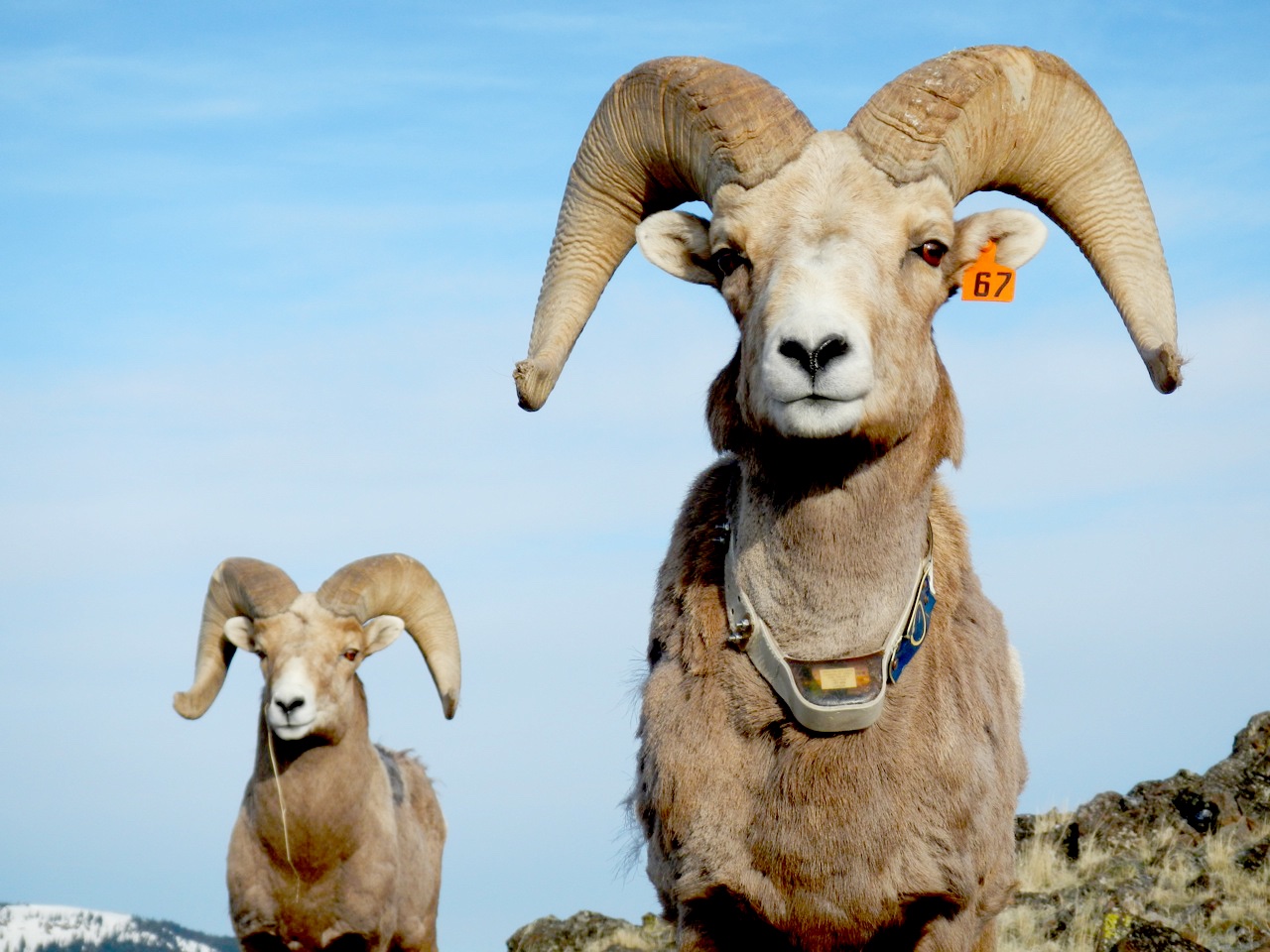Uncategorized
MSU researcher works to restore struggling bighorn sheep populations
Published
7 years agoon
Posted By
Outlaw Partners

By Skip Anderson For MSU News Service
BOZEMAN – Prior to the American westward expansion of the 19th century, there were as many as 2 million bighorn sheep roaming the mountains from modern-day Mexico to Canada. Today, despite intensive restoration efforts, there are fewer than 85,000 bighorn sheep in North America. A Montana State University epidemiologist is working to change that.
“Bighorn sheep have been diminished across the range in the United States ever since settlers brought domestic sheep into the western landscape,” said Raina Plowright, assistant professor of epidemiology in the Department of Microbiology and Immunology in MSU’s College of Agriculture and College of Letters and Science.
Domestic sheep carry the pathogen Mycoplasma ovipneumoniae in their nasal passages, which can cause pneumonia in bighorn sheep, said Plowright, who just completed a four-year study of an infected bighorn sheep population in the Wallowa Mountains of eastern Oregon.
“Domestic sheep rarely die from their infection with mycoplasma,” she said. “But, when bighorn sheep become infected, there is often a die-off, killing 10 to 100 percent of the affected population.”
Additionally, Plowright said, populations that survive the first die-off often remain infected.
“The surviving adults appear quite healthy, but the lambs die of pneumonia and so the populations cannot recover,” she said. “Some populations keep declining and eventually blink out.”
“We hypothesized that there are chronic carriers among the ewes, and they are passing pathogens on to their lambs. But we didn’t really know. That’s what we sought to find out.”
Plowright’s findings were published Sept. 4 in Ecology Letters, a leading international journal of ecology. The study, “Age-specific infectious period shapes dynamics of pneumonia in bighorn sheep” was a collaboration with Idaho and Oregon state wildlife agencies and researchers from three other universities. Co-authors of the paper include David J. Páez, a postdoctoral fellow in MSU’s Department of Microbiology and Immunology.
The bighorn sheep population Plowright studied was particularly useful to her work, as the animals descend to around 6,000 feet during winter and had largely become acclimated to humans through long-term supplemental feeding.
Through the labor-intensive task of swabbing the sinuses and taking blood samples from the same bighorn sheep repeatedly over four years, Plowright found that many of the older ewes were, in fact, asymptomatic carriers of the pneumonia-causing pathogen and were infecting the lambs. Many of the lambs that weren’t killed off by pneumonia matured into short-term asymptomatic carriers themselves, but it was the older ewes who were likely perpetuating the deadly cycle across generations.
Through her work with the Oregon population, Plowright and her colleagues at the University of Idaho also discovered a “genetic signature” at a gene associated with the immune systems of bighorn sheep that potentially contributes to the infection pattern.
The next step is to look at the genetics and the age patterns in other bighorn sheep populations, but, Plowright said, in order to learn the ages of the animals, they have to be monitored from an early age because a ewe over four years old cannot be accurately aged in the field.
“Also, you need to catch animals multiple times to know they are carriers and that’s hard when the population is not habituated— sometimes involving using a helicopter to help capture the animals that live much of their lives on cliff faces,” she said.
The good news is that despite an estimated 96 percent net decline in North American bighorn sheep populations over the past 150 years or so, Plowright said there has been an upward trend in their numbers since the 1970s.
“The population had declined to about 25,000, but today that has rebounded to about 85,000,” she said. “That’s due to a massive effort to reestablish bighorn sheep across western landscapes. But, the persistence of pneumonia in the species is thwarting the repopulation effort by slowing their recovery.”
Plowright said helping the bighorn sheep overcome the pneumonia that has plagued the species for more than a century is critical for their survival.
“We hope our work will help us to manage this disease,” she said. “Bighorn sheep are one of the iconic species of the American West, and they’re ecologically important. They live in this steep terrain and they’re amazing animals. What a tragedy it would be to lose this beautiful creature from our landscape.”
Plowright came to MSU in 2014 as faculty for its cooperative veterinary medicine education program with Washington State University known as WIMU (Washington, Idaho, Montana and Utah).
Since then, she has established a unique and internationally recognized research program at MSU, focused on the study of infectious disease ecology and pathogen spillover from animals to people, said Mark Jutila, head of MSU’s Department of Microbiology and Immunology.
“Not only is this study of considerable interest and importance to the field, it is of particular relevance to Montana because of the issue of bighorn sheep pneumonia and its impact in the state,” Jutila said.
The Outlaw Partners is a creative marketing, media and events company based in Big Sky, Montana.


Upcoming Events
april, 2024
Event Type :
All
All
Arts
Education
Music
Other
Sports
Event Details
We all are familiar with using a limited palette, but do you use one? Do you know how to use a
more
Event Details
We all are familiar with using a limited palette, but do you use one? Do you know how to use a limited palette to create different color combinations? Are you tired of carrying around 15-20 different tubes when you paint plein air? Have you ever wanted to create a certain “mood” in a painting but failed? Do you create a lot of mud? Do you struggle to achieve color harmony? All these problems are addressed in John’s workbook in clear and concise language!
Based on the bestselling “Limited Palatte, Unlimited Color” workbook written by John Pototschnik, the workshop is run by Maggie Shane and Annie McCoy, accomplished landscape (acrylic) and plein air (oil) artists,exhibitors at the Big Sky Artists’ Studio & Gallery and members of the Big Sky Artists Collective.
Each student will receive a copy of “Limited Palette, Unlimited Color” to keep and take home to continue your limited palette journey. We will show you how to use the color wheel and mix your own clean mixtures to successfully create a mood for your paintings.
Each day, we will create a different limited palette color chart and paint a version of a simple landscape using John’s directives. You will then be able to go home and paint more schemes using the book for guidance.
Workshop is open to painters (oil or acrylic) of any level although students must have some basic knowledge of the medium he or she uses. Students will be provided the book ($92 value), color wheel, value scale and canvas papers to complete the daily exercises.
Sundays, April 14, 21 and 28, 2024
Noon until 6PM.
$170.
Time
14 (Sunday) 12:00 pm - 28 (Sunday) 6:00 pm










